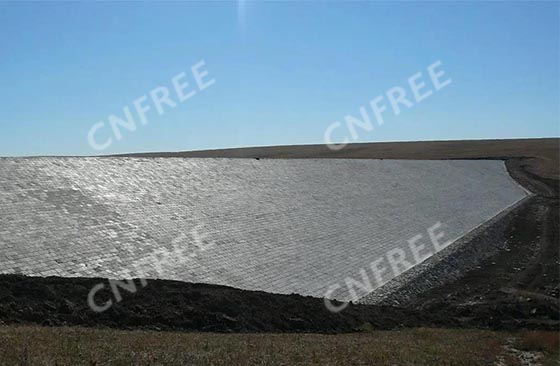2020-09-18 Views:3861
Warm Tip: If you want to know more information, like quotation, products, solutions, etc., please Click here ,and contact us online.

Gold cyanidation process has a history of more than 100 years. Due to its simple process and high gold recovery rate, the gold cyanidation method is widely used by many gold miners. Due to the low grade of gold ore, the tailings production rate is almost 100%. Since cyanide is highly toxic, cyanide tailings will cause serious environmental pollution. Therefore, many countries around the world have begun to formulate relevant regulations to control the cyanide content in tailings produced by gold cyanidation plants.
It is estimated that the annual mine waste generated by the gold mines in the United States is about 68 million m3. Cyanide tailings is a special managed solid waste. The Universal Treatment Standard published by the US EPA stipulates that the total cyanide content of hazardous waste landfills must be less than 590.00 mg/kg, and the content of easily released cyanide must be less than 30.00 mg/kg.
According to the European Union Waste List, cyanide tailings belong to tailings with hazardous ingredients, and the waste code is 010305, which is classified as waste from the physical and chemical processing of metal ores. Eu Directive 2006/21/EC stipulates that for gold mines that have been approved or put into production before May 1, 2008, the content of weak acid decomposable cyanide in the tailings shall not be higher than 50 PPM since May 1, 2008, 25 PPM since May 1, 2013, and 10 PPM since May 1, 2018.
Germany has not formulated special cyanide residue management regulations. However, in Ordinanceon Underground Waste Stowage, the total cyanide content of solid waste should be below 100 mg/kg, the total cyanide content in the exudate should be below 50 μg/L, and the easily released cyanide content should be below 10 μg/L. In addition, the cyanide tailings needs to meet the relevant admission standards before entering the landfill. For the landfill of inert waste that does not have an impermeable liner, the easy-release cyanide concentration of the leaching solution should be less than 0.01 mg/L. The concentration of easily released cyanide in the leachate entering the hazardous waste landfill should be less than 1 mg/L.
Australia compiled and issued the “Manual for Tailings Management” in 2007, focusing on the tailings management system and related technologies. At the same time, it is stipulated that when the concentration of cyanide (weak acid decomposable cyanide) in the liquid phase of cyanide tailings is lower than 50 mg/L, it can be stored in the tailings pond. Australia stipulates that when the cyanide content of the cyanide tailings filling mortar is lower than 50 mg/L, the underground goaf can be filled. At present, there are 3 gold enterprises engaged in underground filling production.
(1) If the concentration of weak acid soluble cyanide in the water of the reservoir and tailings pond exceeds 50 mg/l, the gold mines should take measures to prevent wild animals or livestock from approaching the water surface. You can set up fences around the reservoirs and tailings ponds, or fill the water with rubbish, or cover them with nets.
(2) The gold mine should have sufficient data to show that the concentration of weak acid soluble cyanide in the liquid in its tailings pond, heap leaching facility and solution pool does not exceed 50 mg/L.
(3) Gold mines should prove that if the weak acid soluble cyanide in the open water is not more than 50 mg/L, it can prevent a large number of wild animal deaths.
(4) If gold mines directly discharge wastewater to surface water, the concentration of weak acid soluble cyanide in the wastewater shall not be greater than 0.5 mg/L. But at the same time, it is also stipulated that the storage site needs to be managed for leakage prevention to ensure that the concentration of cyanide (weak acid decomposable cyanide) in the groundwater at the site and downstream does not exceed the local groundwater environmental quality standards.
(5) When discharging cyanide tailings into the river, a certain length of mixing zone can be set up with the permission of the regulatory authority. However, the concentration of free cyanide in the downstream water of the mixing zone shall not be greater than 0.022 mg/L. You should also explain how you measure it.
(6) If the gold mine has indirect drainage, the concentration of free cyanide in the downstream flow of the mixing zone shall not be greater than 0.022 mg/L.
In addition to the above several countries and associations, countries such as Egypt, Sudan and Ghana have also introduced policies banning the use of sodium cyanide in some gold mines. More and more countries have realized the seriousness of cyanide to environment pollution. Cyanide – free gold extraction will be the new trend of gold mine production in the future.
To solve this problem, ITAO Mining Reagent Co., Ltd developed a low-toxicity gold dressing agent, which can 100% replace sodium cyanide without changing the original leaching process and equipment, as well as meet the advantages of both sodium cyanide and eco-friendly leaching reagents.
If you want to learn more about the cyanide tailings management policy, or want to consult the low-toxic gold dressing agent, you can contact the online customer of the website or submit a message, we will contact you as soon as possible!
 +8618890227893
+8618890227893
 pinklaurabao@gmail.com
pinklaurabao@gmail.com
 No. 188, Xinhai Street, high-tech Industrial Park, Fushan District, Yantai, Shandong, China.
No. 188, Xinhai Street, high-tech Industrial Park, Fushan District, Yantai, Shandong, China.

TOP